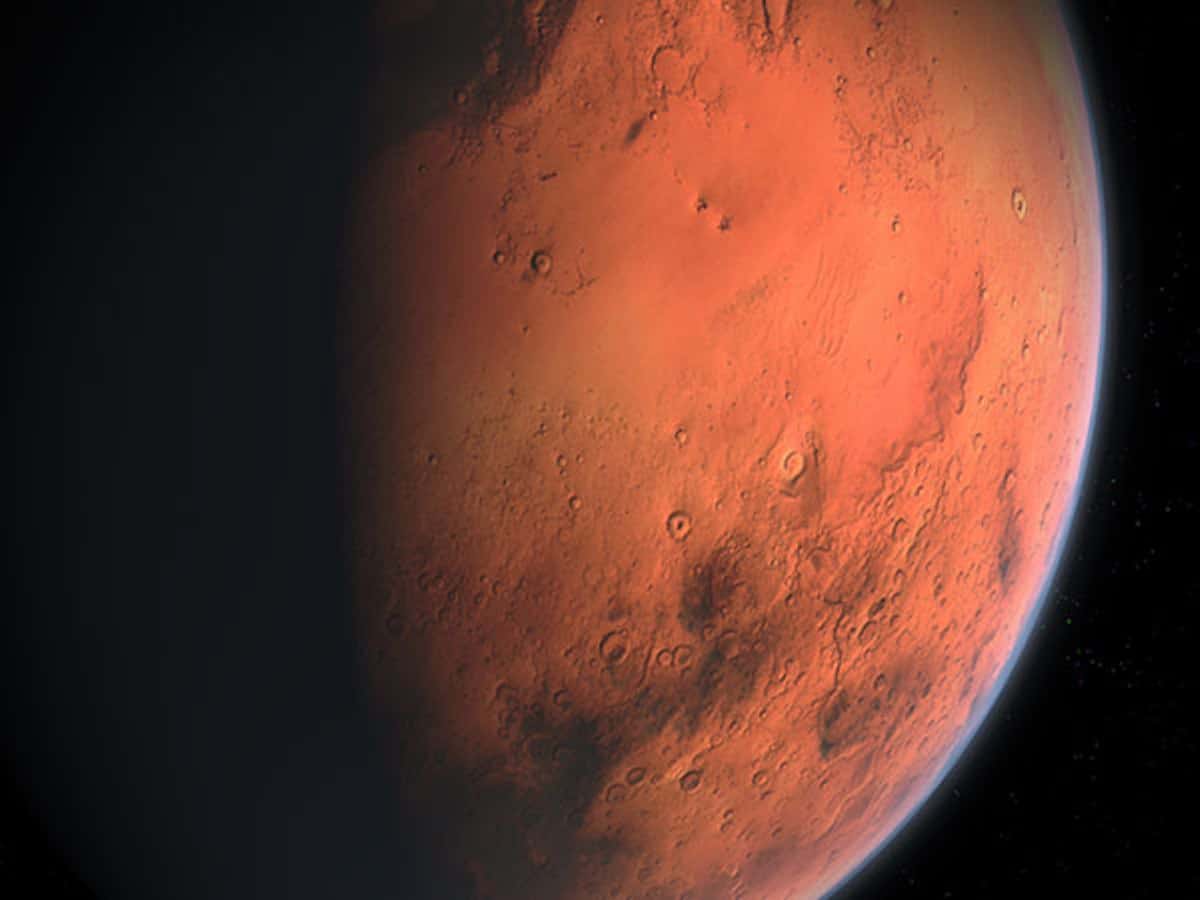
Was there life on Mars? The answer to this earth-shaking question may soon come in the affirmative.
The latest findings on Mars by National Aeronautics and Space Administration’s probe Perseverance seem to be positive.
The Perseverance rover landed at the bottom of Jezero crater in Mars in 2020.With its array of sophisticated instrumentation it has been studying the surface and rock samples.
The good news is that analysis of the rock samples shows evidence of liquid water and the possible existence of organic compounds.
Perseverance, a large rover went atop the United Launch Alliance Atlas V rocket. It was launched on 30 July 2020 and landed on Mars on 18 February 2021, after NASA’s earlier rover Curiosity.
Now details are slowly coming out that habitable conditions once existed on Mars.
Is there any life in Mars today is not known? The search is still on. The chances are very dim today, as Mars is hostile to life. the atmosphere is extremely thin and cold, and no water can exist on the surface in any form other than ice.
Eons ago it may have had water and may have been warmer when even life had perhaps not evolved on earth. Mars may have had enough water 4.5 billion years ago to cover it in a global ocean almost 1,000 feet deep.
On Mars, there may have evolved simple forms of life. That itself may be an earth-shaking finding if we find actual evidence, because life, as we know it today, is only confined to the earth.
If Mars had lakes and rivers in ancient times, then there is no reason why simple life forms would not have evolved there.
National Aeronautical and Space Administration had sent its Perseverance craft to search for bio-signatures of this nature on Mars.
Astrobiology is an important agenda of Perseverance – search for fossilized traces of any bygone Martian microbes.
The rover is collecting samples from Jezero Crater on Mars which are being sealed in a container that will be picked up and sent back to earth by another Mars mission for further detailed examination. The data for the new studies was collected over nearly two years of extra-terrestrial exploration.
Studies on these show that there are many igneous (or volcanic) rocks in the area and that there were two distinct periods when the crater was influenced by the presence of water. One is supposed to be around 3.8 billion years ago and the second is 2.8 billion years ago when the water had become salty and produced chemicals called perchlorates (harmful to human health).
It was noticed that the material there had very strange chemistry not common on Earth.
The instrument on the rover was also able to detect organic molecules, which are key ingredients for life, confirming that habitable conditions did once exist there.
The importance of finding evidence of organic compounds is that they form the building blocks for life. They are not necessarily signs of life, but if you see liquid water and organic compounds together anywhere there is always the possibility of life as they’re the key components that would make life possible and confirming the possibility of a habitable environment.
However, we should not have our hopes high because it does not mean that life ever actually arose on the red planet.
The existence of organic compounds (chemical compounds with carbon-hydrogen bonds) is a key ingredient of life though not direct evidence of life. One has to completely rule out the fact that these compounds have not been created through non-biological processes.
It is only when these samples are brought home to earth that a more detailed examination with large instruments and laboratories can take place and we can come to a firm conclusion regarding the evidence of life in other planet apart from earth by studying the water and organic matter.
Jezero delta was of interest because it can preserve microorganisms. Deltas are formed when fine river sediments are deposited trapping and preserving any microorganisms that may exist in the water.
Interestingly instead of finding sedimentary rocks, the rover found igneous rocks on the crater floor with evidence of water and minerals like carbonates and salts and evidence of possible organic compounds.
Interestingly this discovery was made using SHERLOC, or the Scanning Habitable Environments with Raman & Luminescence for Organics & Chemicals, instrument which has a spectrometer. Indians should feel proud of the fact that scientists will use Raman spectroscopy, a scientific technique named after Indian physicist CV Raman to identify different molecules in the organic compounds based on the distinctive spectral fingerprint visible in their emitted
The possibility of the existence of water on Mars found by Perseverance allows us to build a scenario for Mars that nearly 3.5 billion years ago, Jezero was the site of a large lake, complete with its own river delta.
The water may have disappeared but within a 45-kilometer-wide crater, 2,000-foot-tall rim,biosignatures that life once existed there may still be present.
The question if there is life elsewhere in the Universe may be proven soon.
Astrophysicists have always accepted the high probability of there being life elsewhere in the universe purely by the fact that the Universe is teeming with trillions and trillions of suns and planets.Therefore to assume that life arose alone on earth is the height of egocentricity.
The elements hydrogen, oxygen, and carbon account for over 95% of the atoms in the human body and in all known life.
Of the three, the chemical structure of the carbon atom allows it to bond readily and strongly with itself and with many other elements in many different ways, which is how we came to be carbon-based life, and which is why the study of molecules that contain carbon are generally known as “organic” chemistry.
Most astrophysicists accept a high probability of there being life elsewhere in the universe, if not on other planets or on moons within our own solar system.
No wonder we are thrilled to find organic compounds anywhere outside the earth because the probability of life enhances. The presence of glycolaldehyde — a simple sugar — in an interstellar gas cloud.
Complex molecules are not only found throughout the Universe. We find these everywhere including the inter-stellar gas clouds, matter coming of stars, nebulae, asteroids, meteorites etc.
ESA, HEXOS AND THE HIFI CONSORTIUM; E. BERGINamino acids, sugars, aromatic hydrocarbons, and even esoteric compounds like ethyl formate: the olfactory molecule that gives raspberries their characteristic smell.
NASA / JPL-CALTECH / T. PYLE; SPITZER SPACE TELESCOPE
RICHARD GORDON AND ALEXEI SHAROV, ARXIV:1304.3381contents migrated into space and eventually came to Earth in a great panspermic event, which is certainly possible. But it also could have been in the depths of interstellar space, where the energy from the galaxy’s stars and cataclysms provided an environment for molecular assembly. It may not necessarily have been life in the form of a cell, but a molecule that can collect energy from its environment, perform a function, and reproduce itself, encoding the information essential to its existence in the reproduced molecule, just might qualify as life.
So when we talk of the origin of life on earth the first organic molecules may have come elsewhere from space and not evolved only on earth.
Life if it exists in interstellar space, then every that forms in the Universe today may have these primitive lifeforms being brought to it at the time the planets form.
According to some astronomers the abundance of complex molecules in space may also indicate that life is widespread in the Galaxy. Even if a planet starts off barren, asteroids, comets and interplanetary dust bring in the first molecular building blocks of life to its surface.
Even though some astronomers do not agree that meteorites have amino acids others say that organic molecules are found around young stars.

